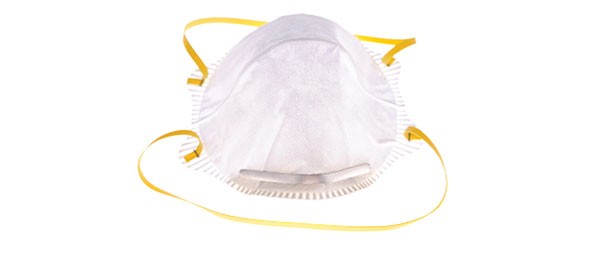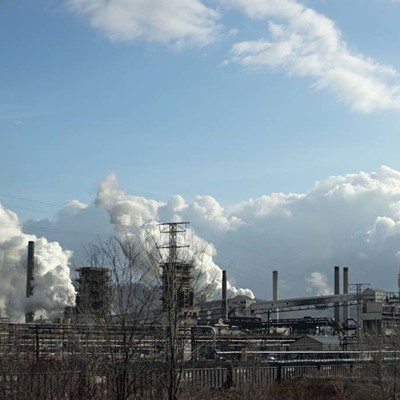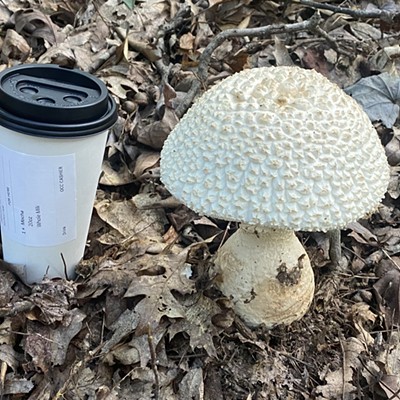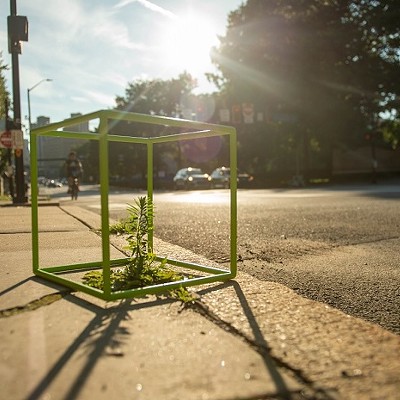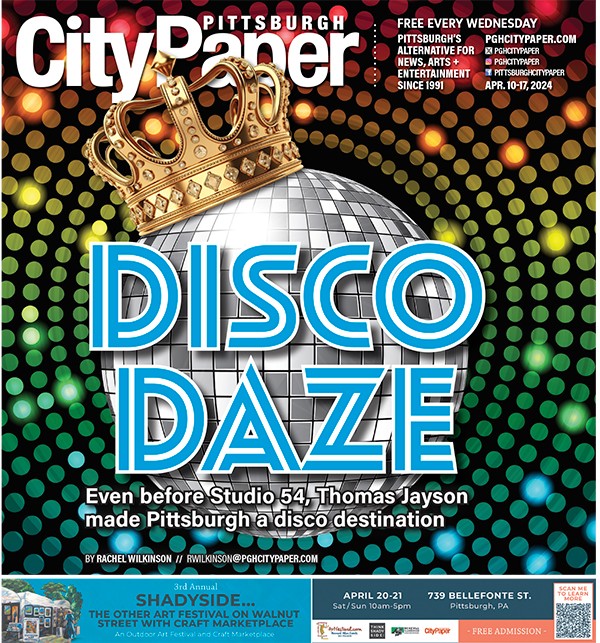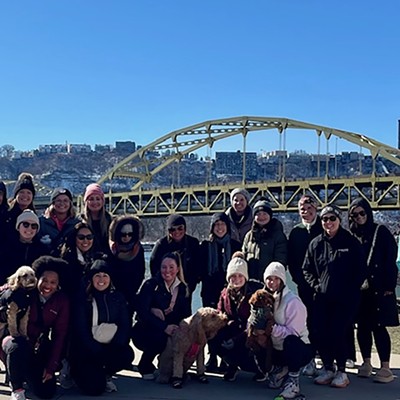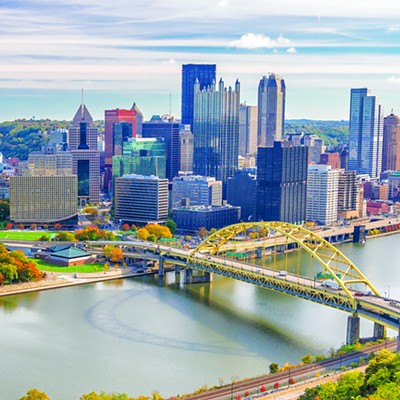At lunchtime two Fridays ago, 30 young adults wearing dust masks gamboled into Market Square. Festive at first, trading high-fives, seconds later they began coughing convulsively. Then, one by one, they collapsed onto the pavement, inert.
Over a PA, a voice spoke. "Pittsburgh's air isn't as clean as it looks," it said. "Each one of us can fix the problem by doing simple things."
A couple hundred Downtown office workers munching sandwiches had just witnessed a flash-mob-style spectacle by interns funded by the Heinz Endowments. The skit advertised the Breathe Project, a Heinz-led coalition of about 80 businesses, government agencies and nonprofit groups trying to improving the region's air quality.
Breathe was launched last fall, but it's been stepping up its presence with radio spots, full-page newspaper ads and high-profile partnerships with organizations, including the Pittsburgh Pirates. The campaign so far has two big themes: One, invisible pollution can hurt you. And two, you can help.
How useful is this approach?
Despite improvements in air quality, Pittsburgh ranks high on most dirty-air lists. Groups including the American Lung Association still rank it among the nation's worst metro areas for both airborne particles (i.e., soot) and ground-level ozone. Both pollutants damage lungs — exacerbating ailments like asthma — and can induce chronic diseases and shorten lives. Pollution levels are high even outside notorious hotspots like communities near U.S. Steel's Clairton Coke Works.
But unlike the old days, when streetlights burned at noon, our air today is basically transparent. In focus-group studies, air quality "was not perceived as a particular challenge by lots of folks here," says Heinz Endowments President Bobby Vagt. Even some visible pollution is thought benign: That light-blue haze of summertime might look like humidity, but it's actually ozone, says Jamin Bogi, of the Group Against Smog and Pollution, a Breathe Project partner.
All that makes a focus on invisible pollution — represented in Breathe Project posters and videos by malevolent floating purple blobs — entirely apt.
But expressing the problem doesn't solve it. Most air pollution comes directly or indirectly from energy use — especially burning fossil fuels, whether in coal-fired power plants, city buses, diesel trucks or your car. Breathe Project ads suggest that to further clear the air, individuals should reduce their energy consumption. Get a home energy audit (to inspire better insulation, for instance). Turn down your thermostat, unplug unused appliances and use energy-efficient light bulbs. Commute by carpool or bus.
Emphasizing individual initiative, however, is a retail approach to the problem: It will take a ton of buy-in from a ton of people to make much difference. Vagt says Breathe is focusing on "solutions rather than blame." But urging individuals to reform their personal habits feels a bit like blaming them for air pollution — rather than, for instance, the region's power plants, among the nation's dirtiest.
In fact, as Vagt himself acknowledges, half of Pittsburgh's air pollution comes from outside the area — wafting up the heavily industrialized Ohio River valley, for example. And according to Allen Robinson, a Carnegie Mellon University professor who studies air quality and who's on the Breathe leadership team, most air-quality improvements in recent decades have come not from people conserving energy, but from mandatory limits on emissions from power plants and vehicles. (The economic downturn also contributed, he says.)
To be fair, the Breathe Project is doing more than urging conservation. Its coalition includes not just universities and environmental groups, but companies like U.S. Steel, Duquesne Light and natural-gas producer EQT. Such a roster might foster collaboration and buy-in for a broader agenda. And Heinz itself is putting its money where our lungs are. In recent months, it's contributed nearly $1 million to an Allegheny County Health Department fund to help small construction firms retrofit old equipment with clean diesel technology, and $500,000 to a fund to similarly retrofit city school buses.
Moreover, Vagt voices support for proposed new county air standards, the first since a long-outdated 1988 revision.
Finally, notes Robinson, simply raising awareness of air pollution is helpful. After all, while the federal Clean Air Act and other laws that reduced emissions were top-down, they happened because regular people spoke out. "It's the citizen pressure that makes it happen," he says.

